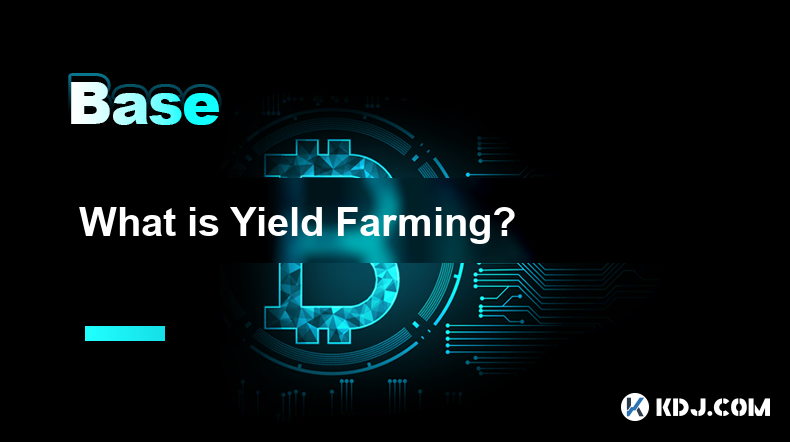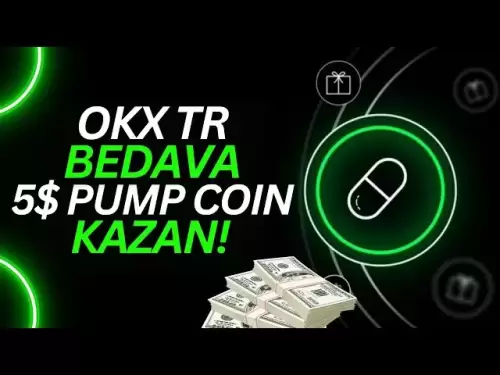-
 Bitcoin
Bitcoin $117700
0.64% -
 Ethereum
Ethereum $3766
1.44% -
 XRP
XRP $3.545
3.02% -
 Tether USDt
Tether USDt $1.000
0.00% -
 Solana
Solana $201.4
12.46% -
 BNB
BNB $766.0
2.28% -
 USDC
USDC $0.9999
0.01% -
 Dogecoin
Dogecoin $0.2720
2.37% -
 Cardano
Cardano $0.8942
5.70% -
 TRON
TRON $0.3135
0.55% -
 Hyperliquid
Hyperliquid $44.62
-2.41% -
 Stellar
Stellar $0.4757
1.39% -
 Sui
Sui $4.010
3.56% -
 Chainlink
Chainlink $19.59
2.25% -
 Hedera
Hedera $0.2701
-0.95% -
 Avalanche
Avalanche $25.68
3.18% -
 Bitcoin Cash
Bitcoin Cash $522.7
-2.05% -
 Shiba Inu
Shiba Inu $0.00001552
2.28% -
 Litecoin
Litecoin $116.1
-0.34% -
 UNUS SED LEO
UNUS SED LEO $8.991
0.01% -
 Toncoin
Toncoin $3.349
3.48% -
 Polkadot
Polkadot $4.504
1.83% -
 Uniswap
Uniswap $10.93
5.54% -
 Ethena USDe
Ethena USDe $1.001
-0.01% -
 Pepe
Pepe $0.00001440
4.56% -
 Monero
Monero $319.3
-0.87% -
 Bitget Token
Bitget Token $4.870
0.09% -
 Dai
Dai $0.9999
0.00% -
 Aave
Aave $321.6
0.20% -
 Bittensor
Bittensor $453.3
10.25%
What is Yield Farming?
Yield farming strategies, including liquidity provision, lending, and staking, enable the management of digital assets to generate passive income within decentralized finance (DeFi) platforms.
Feb 15, 2025 at 12:37 pm

Key Points:
- Understanding Yield Farming and Its Benefits
- Identifying Types of Yield Farming Strategies
- Earning Rewards through Liquidity Provision
- Maximizing Returns with Leveraged Yield Farming
- Assessing Risks and Mitigating Strategies
What is Yield Farming?
Yield farming, a concept borrowed from traditional finance, has gained immense popularity in the cryptocurrency ecosystem. It involves actively managing digital assets to generate passive income through various strategies. Participants in yield farming programs seek to maximize returns by leveraging decentralized finance (DeFi) platforms and protocols. These platforms offer a range of financial services, enabling users to lend, borrow, swap, and trade cryptocurrencies.
Types of Yield Farming Strategies:
- Liquidity Provision: This strategy involves depositing cryptocurrencies into liquidity pools, which facilitate automated market making (AMM). In return, liquidity providers earn trading fees generated from swaps and transactions within the pool.
- Lending: Yield farmers can lend their crypto assets to borrowers in exchange for interest payments. DeFi platforms match lenders with borrowers, enabling peer-to-peer lending and maximizing the utilization of idle assets.
- Staking: Proof-of-Stake (PoS) blockchains offer yield farming opportunities through staking. By staking their cryptocurrencies, farmers support blockchain operations while earning rewards for validating transactions.
- Leveraged Yield Farming: This advanced strategy amplifies potential returns by leveraging borrowed funds to increase exposure to yield farming strategies. However, it also magnifies risks and requires careful risk management.
Earning Rewards through Liquidity Provision:
- Identify a liquidity pool with a desirable trading pair and yield percentage.
- Deposit the required cryptocurrencies into the liquidity pool, proportionate to the pool's weighting.
- Receive liquidity provider (LP) tokens representing your share of the pool.
- Earn a percentage of the trading fees generated by the pool, proportional to your LP token holdings.
Maximizing Returns with Leveraged Yield Farming:
- Determine the desired leverage ratio and identify a lending platform that supports leveraged yield farming.
- Borrow funds using your crypto assets as collateral and deposit them into a yield farming strategy.
- Monitor the health of your borrowing position and adjust accordingly to maintain your collateralization ratio.
- Balance the potential returns against the increased risks associated with leveraged yield farming.
Assessing Risks and Mitigating Strategies:
- Smart Contract Risk: Ensure the yield farming platform has a reputable history and undergoes thorough audits.
- Impermanent Loss: Understand the concept of impermanent loss when providing liquidity, as your assets' value may fluctuate relative to the pool.
- Rug Pull Risk: Research the credibility of the yield farming project and avoid investing in projects that exhibit suspicious or high-risk characteristics.
- Price Volatility: Monitor the market conditions and adjust your yield farming strategy accordingly to manage price fluctuations.
FAQs:
Q: What is the best yield farming strategy?
A: The best strategy depends on individual risk tolerance, market conditions, and the available yield farming options. A balanced approach combining multiple strategies can provide optimal returns while diversifying risks.
Q: Can I lose money in yield farming?
A: Yes, yield farming involves risks, including smart contract failures, impermanent loss, and liquidity risks. Proper risk management and research are crucial to minimize potential losses.
Q: What are the differences between yield farming and traditional finance?
A: Yield farming in DeFi offers accessibility and flexibility that traditional finance does not. DeFi platforms enable seamless liquidity provision, lending, and staking, providing users with opportunities to generate passive income in a decentralized ecosystem.
Disclaimer:info@kdj.com
The information provided is not trading advice. kdj.com does not assume any responsibility for any investments made based on the information provided in this article. Cryptocurrencies are highly volatile and it is highly recommended that you invest with caution after thorough research!
If you believe that the content used on this website infringes your copyright, please contact us immediately (info@kdj.com) and we will delete it promptly.
- ETH Holders in Profit: Value Surge Fuels Bullish Sentiment
- 2025-07-22 09:30:13
- NEAR Protocol's AI Leap: Double-Digit Gains and Future Potential
- 2025-07-22 09:30:13
- Cryptos, Meme Coins, Buy Now: Riding the Wave of Hype
- 2025-07-22 08:30:13
- Altcoins in July 2025: Trends, Insights, and a Few Wildcards
- 2025-07-22 08:50:13
- Yuan Stablecoin on Conflux: A New Era for Cryptocurrency?
- 2025-07-22 08:30:13
- Cosmos (ATOM) Network Upgrade Fuels Bullish Momentum, But Overbought Signals Emerge
- 2025-07-22 08:50:13
Related knowledge

What is the difference between CeFi and DeFi?
Jul 22,2025 at 12:28am
Understanding CeFi and DeFiIn the world of cryptocurrency, CeFi (Centralized Finance) and DeFi (Decentralized Finance) represent two distinct financia...

What is the difference between a sidechain and a Layer 2?
Jul 20,2025 at 11:35pm
Understanding the Concept of SidechainsA sidechain is a separate blockchain that runs parallel to the main blockchain, typically the mainnet of a cryp...

What is the Inter-Blockchain Communication Protocol (IBC)?
Jul 19,2025 at 10:43am
Understanding the Inter-Blockchain Communication Protocol (IBC)The Inter-Blockchain Communication Protocol (IBC) is a cross-chain communication protoc...

How does sharding improve scalability?
Jul 20,2025 at 01:21am
Understanding Sharding in BlockchainSharding is a database partitioning technique that is increasingly being adopted in blockchain technology to enhan...

What is the "crypto trilemma" of scalability, security, and decentralization?
Jul 19,2025 at 06:28pm
Understanding the Concept of the Crypto TrilemmaThe crypto trilemma refers to the challenge of simultaneously achieving scalability, security, and dec...

What is a cliff and vesting schedule in tokenomics?
Jul 20,2025 at 10:28am
What Does a Cliff Mean in Tokenomics?In tokenomics, a cliff refers to a specific period during which token holders are not allowed to access or transf...

What is the difference between CeFi and DeFi?
Jul 22,2025 at 12:28am
Understanding CeFi and DeFiIn the world of cryptocurrency, CeFi (Centralized Finance) and DeFi (Decentralized Finance) represent two distinct financia...

What is the difference between a sidechain and a Layer 2?
Jul 20,2025 at 11:35pm
Understanding the Concept of SidechainsA sidechain is a separate blockchain that runs parallel to the main blockchain, typically the mainnet of a cryp...

What is the Inter-Blockchain Communication Protocol (IBC)?
Jul 19,2025 at 10:43am
Understanding the Inter-Blockchain Communication Protocol (IBC)The Inter-Blockchain Communication Protocol (IBC) is a cross-chain communication protoc...

How does sharding improve scalability?
Jul 20,2025 at 01:21am
Understanding Sharding in BlockchainSharding is a database partitioning technique that is increasingly being adopted in blockchain technology to enhan...

What is the "crypto trilemma" of scalability, security, and decentralization?
Jul 19,2025 at 06:28pm
Understanding the Concept of the Crypto TrilemmaThe crypto trilemma refers to the challenge of simultaneously achieving scalability, security, and dec...

What is a cliff and vesting schedule in tokenomics?
Jul 20,2025 at 10:28am
What Does a Cliff Mean in Tokenomics?In tokenomics, a cliff refers to a specific period during which token holders are not allowed to access or transf...
See all articles

























































































